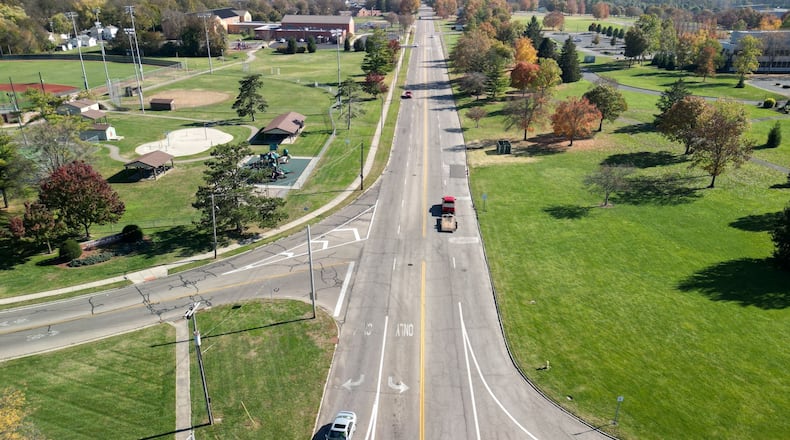The investment was made possible by the Infrastructure Investment and Jobs Act, also known as the Bipartisan Infrastructure Law ― legislation that Brown helped write and pass ― and will support the development of safety action plans and safety improvements.
The city of Hamilton received $400,000 to create a safe streets action plan, and for separated bike lanes, and a road treatment.
Middletown received $200,000 to develop a Comprehensive Safety Action Plan.
Two Warren County cities, Franklin and Lebanon, received $112,000 and $114,563, respectively, to develop a Comprehensive Safety Action Plan.
Earlier this year, Hamilton established a Safe Streets for All committee to identify projects for the federal program Safe Streets for All, which was established in 2022.
The committee established projects and elected to pursue funding for several projects.
The grant application was due in July.
Hamilton sought $400,000, and the city committed to kicking in an additional $100,000 for a two-component project.
The first part would be completing the Safe Street for All plan, which would be a supplement to the city’s Active Transportation Plan. The second part is what’s called a demonstration project, a component recently required by the federal government of the Safe Streets for All funding program.
The demonstration project will be on Knightsbridge, from Neilan Boulevard to University Boulevard. The project would convert the road from a four-lane to a three-lane roadway (two lanes and a center turn lane). It would also include a separate and protected two-way bike lane.
Planning Director Liz Hayden said the reason the city is developing this Safe Streets for All plan is that “our Active Transportation Plan only focuses on bike and pedestrian traffic, and the thing that is missing is the vehicular component.”
The city has reduced lanes on roads in Hamilton in recent years, including on Eaton Avenue and University Boulevard.
“It’s worked very well,” Hamilton Assistant Director of Engineering Alan Messer said, adding that anecdotally, they’ve heard reviews on the University Boulevard project of less speeding.
Messer said the Knightsbridge project also “will connect the neighborhood better to the (Great Miami River).”
The river is an underutilized resource in the city, something City Council and the administration want to and have been addressing.
Hayden and Messer said this project would be a good opportunity to get people to utilize the bike and walking path along the river, as the project also includes improved crossings at Neilan Boulevard and Front Street along Knightsbridge.
Hayden said Hamilton leaders “really want to make it a better connection” for the public as it’s also “part of the Miami-to-Miami Trail plan, so it hits a lot of goals.”
Messer called the project important because “we wanted to do something in that neighborhood.”
The timing of the project is dependent on when the funds will be made available and the planning process.
First, there needs to be a study and design of the project, and then the project could take just a few weeks or a couple of months to complete.
Messer said it’s realistic to see the project be done in 2025, but when in that year would depend on whether the road needs to be resurfaced ahead of the restriping of Knightsbridge and installation of the buffered bike path or after the project is completed.
Middletown city officials said the grant will enable the “comprehensive evaluation” of the city’s transportation system.
There have been “significant changes” in the city since the original roadways and boulevards were constructed, and it’s vital to adapt to the evolving needs and conditions, the city said in an email.
This evaluation will consider various aspects of transportation, including roadways, public transit, and accommodations for bike and pedestrian traffic. The evaluation of crash data will also assist in identifying areas with safety concerns and prioritizing improvements, the city said.


